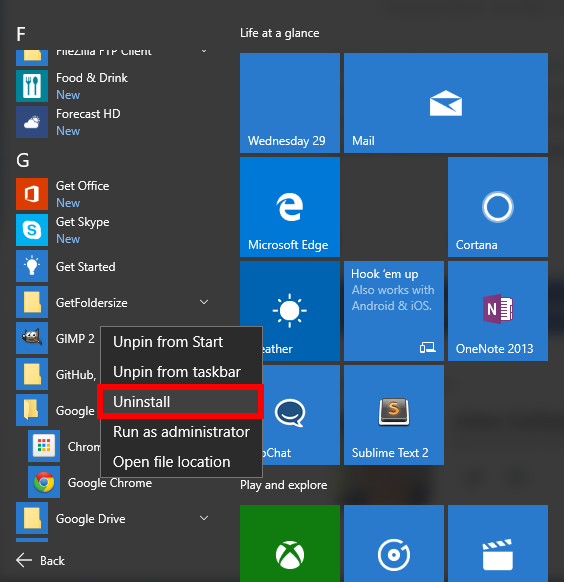

- Does deleting an app uninstall it install#
- Does deleting an app uninstall it android#
- Does deleting an app uninstall it software#
- Does deleting an app uninstall it download#
Social media apps are also notorious for high battery consumption even when they are not being used. The more time you spend on them, the greater the effect it has on your battery life. Social media apps take up a lot of screen time on our smartphones.
Does deleting an app uninstall it android#
Tip : On older Android versions it is possible to clear all cached data with just one command: Just go to Settings > Storage > and tap Cached data. If you want to know more about the difference between cleaning an apps' cache or data, we have a dedicated article just for this topic.Ĭlean Master and similar apps often require a lot of battery power, and their in-app advertising has the potential to take a chunk out of your monthly data allowance. Tap Apps & notifications (or simply App, depending on the system).Īpplication's cache can be cleared manually in the Settings menu / © NextPit.If you notice an app is misbehaving, you can clear its cache using these steps:
Does deleting an app uninstall it download#
It's good to keep your Android system clean - but don't depend on third-party apps for it / © NextPitĬleaning apps promise to clean up your phone to boost performance. While i t's true that deleted applications sometimes leave behind some cached data, it's not necessary to download a dedicated cleaner. Furthermore, Android manages RAM usage automatically and knows when to run an app or not, so third-party apps aren't necessary. So, these memory-saving apps don't make much sense. Memory and battery life are used to restart the apps, and this constant closing and restarting of apps can make your phone not only slower but also consume more battery.
Does deleting an app uninstall it software#
You can remove these applications from the Ubuntu Software Center easily but if you want to use the command line, here’s what you should do.

Most of the software you find in the Ubuntu Software Center are in this Snap package format. Ubuntu also has a new packaging system called Snap. The previous method works with the DEB packages that you installed using apt command, software center or directly from the deb file. Method 3: Uninstall Snap applications in Ubuntu

Keep in mind that the purge command won’t remove any data or configuration file stored in the home directory of a user. You can use it instead of apt remove command or after running the apt remove command. If you want to remove it completely, you can use apt purge command.
Does deleting an app uninstall it install#
This is intentional because if you install the same program again, it would use those configuration files. When you remove a package in Ubuntu, the packaged data is removed, but it may leave small, modified user configuration files. Tip: Using apt purge for removing package (advanced users) That’s cool, isn’t it? Just be careful with the package name when using the remove command in Ubuntu. When it asks for your conformation, press the enter key or Y key: The program won’t be removed immediately. When you enter it, nothing is visible on the screen. You’ll be asked to enter your account password. For uninstalling, you don’t use the apt-get uninstall command but apt-get remove or apt remove.Īll you need to do is to use the command in the following fashion: sudo apt remove program_name You know that you can use apt-get install or apt install for installing applications. Method 2: Remove programs from Ubuntu using command line You can always resort to the terminal in such cases. This method works pretty well except in the case when Software Center is misbehaving (it does that a lot) or if the program is a software library or some other command line utility. Enter it and the applications will be removed in seconds. When you open an installed application, you should see the option to remove it. If you don’t see a program here, try to use the search feature.


 0 kommentar(er)
0 kommentar(er)
